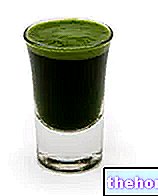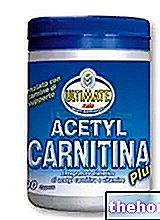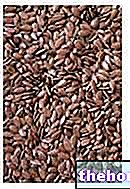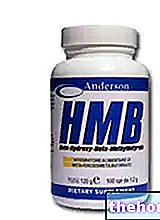
Theanine possesses a structure very similar to that of the amino acid glutamine. At the same time, the chemical structure of theanine also has similarities with the structures of gamma-aminobutyric acid (or GABA) and glutamic acid, two very important neurotransmitters of our nervous system.
Theanine is a non-proteinogenic amino acid, which means that unlike glutamine and glutamic acid it is not incorporated into polypeptide chains (proteins).
Where is Theanine found?
As we have said, tea represents the main source of theanine, however, its presence has also been revealed in some plants belonging to the genus Camellia and in some fungi of the species Boletus badius (Xerocomus badius).
and anxiolytic;What benefits has Theanine shown during the studies?
Although most of the studies currently published on the clinical and biological efficacy of theanine are experimental in nature, the data obtained are certainly worthy of attention.

Theanine and relaxation
The best known and most publicized property of theanine concerns the alleged relaxing, anti-stress and anxiolytic effects. These properties seem to be attributable to the ability of this substance to act as an indirect substrate for the synthesis of GABA (the endogenous precursor of GABA is, in fact, glutamic acid). GABA - also known as gamma-aminobutyric acid - is a neurotransmitter to inhibitory action that promotes the sensation of relaxation Not surprisingly, many drugs with sedative, muscle relaxant, anticonvulsant and hypnotic action, act by stimulating the GABA receptors (in technical terms they are said to be its receptor agonists).
Rapidly absorbed in the intestine and distributed in the tissues, theanine crosses the blood brain barrier without obstacles, increasing the levels of GABA and consequently recreating the so-called "sense of well-being".
Its inhibitory or stimulatory effect on the release of serotonin seems less clear, which would be modulated according to the situation; the ability of theanine to favor the release of dopamine appears to be more certain.
All the above actions would have resulted, in a relatively recent clinical trial, in a clear anxiolytic action, also observed through the "increase in" activity of the alpha brain waves, connected to the general state of rest and sedation.
Particularly appreciated is the fact that theanine seems to exert its relaxing action without causing drowsiness or altering attention and concentration.
Theanine and caffeine
The sedative effect of theanine is able to counteract the excitatory properties of the caffeine present in tea or taken through other foods (guarana, mate, cola, coffee, etc.).
In fact, caffeine acts as a competitive antagonist of adenosine receptors, increasing the levels of adrenaline and noradrenaline; consequently, it supports the body's metabolism, heart rate, attention threshold, blood pressure and the number of acts. respirators.
Theanine, glutamic acid and the nervous system
Recent studies have investigated the ability of theanine to inhibit the "excitatory toxicity" of glutamic acid.
In fact, in addition to being a precursor of the "relaxing" inhibitory neurotransmitter GABA, glutamic acid as it is, at the level of the nervous system, is an excitatory neurotransmitter.
Consequently, high concentrations of glutamic acid at the level of the cerebral synapses could favor the appearance of symptoms such as headache, hyper arousal, insomnia, dizziness, palpitations and hot flashes.
The accumulation of glutamic acid in the brain would also appear to be responsible for the neuronal damage typical of progressive sclerosis (such as amyotrophic lateral sclerosis) and Alzheimer's disease.
The efficacy of theanine in regulating the levels of glutamic acid in the brain, demonstrated in vitro and on experimental animals, seems to be linked to its modulatory effect at the level of the receptors of this neurotransmitter; in practice, given the structural analogy, theanine it could bind to the glutamic acid receptors stimulating them in a much lower way than the endogenous agonist, or even inhibiting them.
Theanine and hypertension
The modulatory activity towards the receptors for glutamic acid would partly justify the central antihypertensive action of theanine. This activity could, therefore, reduce both brain and heart damage related to hypertension.
Theanine and chemotherapy
According to research conducted mostly in vitro, theanine could enhance the effect of various anticancer drugs, such as doxorubicin. This synergy would therefore determine:
- A "more effective antitumor action;
- Greater success of drug therapy, in particular, in cancers such as ovarian sarcoma and liver metastases;
- A reduction in the potential side effects of chemotherapy;
- An improvement in the patient's quality of life.
However, before a "possible therapeutic application of this type, further studies are needed."
or as an additive.
Uses of Theanine in Food Supplements
Theanine is not a drug and is currently part of the composition of several food supplements used for:
- Promote relaxation while maintaining attention and concentration;
- Promote the quality of sleep (in these cases, it is often associated with plant extracts with a sedative and relaxing effect);
- Balance the stimulating effects of other substances contained in supplements, such as caffeine;
- Promote attention and concentration.
Note: within food supplements, theanine is present as L-theanine; in other words, only the L enantiomer is present.
Did you know that ...
Theanine is also included in the composition of food supplements for veterinary use whose use is intended for horses, to promote relaxation of the animal.
Use of Theanine as Food Additives
Sometimes, theanine is used as an additive to reduce the bitter taste of certain foods. This is possible thanks to the particular taste it possesses.
. Most of them are formulated in the form of tablets or capsules which are usually swallowed whole with water. But theanine supplements can also be found in the form of oral drops. In any case, for the correct method of taking it is always good to refer to the instructions on the product.
In what dosage is Theanine taken?
Indicatively, the dose of theanine usually used is 100-200 mg per day. However, it is very important to respect the dosages indicated on the package and on the package leaflet of the food supplement that you want to take. If in doubt, it is advisable to contact your pharmacist or doctor.
).Furthermore, it should be noted that the use of theanine at the same time as chemotherapy therapy should be strictly supervised by medical personnel and, in any case, must not be carried out without first asking the opinion of one's oncologist or doctor.
and other hypnotic drugs.
In any case, other interactions cannot be ruled out; therefore, if you are undergoing drug therapies or are taking other supplements or products of any kind, before taking theanine it is advisable to ask your doctor for advice.
in sensitive individuals. For this reason, in the event of any unusual effects following the intake of theanine or products containing it, it is advisable to discontinue its use and inform your doctor. breast.
However, once again the importance of contacting your doctor is reiterated before taking any type of supplement or product containing theanine.
Select plant Fir Acacia Acerola Sorrel Yarrow Yarrow Yarrow Aconito Adatoda Garlic Agnocasto Agrimonia Alchemilla Alkekengi Aloe Altea Witch Hazel Ammi or Visnaga Pineapple Andrographis Anemone Pulsatilla Angelica Anise Star Anise Japanese Star Anise Bitter Orange Bitter Areca Arnica Harpagophytum Arpagophyte Artemisia Asteragus Basil Asparagus Asparagus Peruvian Asparagus Asparagus Asparagus Hawthorn Boldo Borage Shepherd's Purse Boswellia Bucco Butea superba Cocoa Coffee Cajeput Calamus Calamus Marigold Camedrio Chamomile Roman Chamomile Camphor Cinnamon Ceylon Maidenhair Capuchin Artichoke Cardamom Cardiac Thistle Asian Thistle Carvi Cascara Cassia Catecu Catha Cabbage Celandine Chicory Centaurea Cinnamon Cypress Celandine Chives Cypress Coca Cola Colchico Combreto Condurango Comfrey Coriander Cranberry Barberry American Chrysanthemum Cumin Turmeric Damiana Digital Dioscorea Drosera Dulcamara Dunalilella Echinacea Eder a Ephedra Elenio Eleutherococcus Helichrysum Evening primrose Horsetail Alfalfa Erica Euphrasia Erisimo Escolzia Eucalyptus Farfara Farfaraccio Calabar bean Fenugreek Fennel Phytolacca Frangola Ash Fumaria Japanese Mushrooms Galega Ganoderma lucidum Garcinia Cambogia Mulberry Gentian Broom Ginkgo Ginkgo Guipana Guipana Gynestra Ginkgo Hibelia Gymnasium Hibiscus Guarulp St. John's Wort Horse Chestnut Ispaghul Hyssop Jaborandi Kava kava Konjac Laminaria Cherry Laurel Lavender Lemongrass Lespedeza Lovage Icelandic Lichen Lemon Flax Lippia Licorice Lobelia Hops Maca Marjoram Maize Mallow Manna Marrubio Marrubio d "water Matè Melaleuca Meliloto American Lemon balm Myrtle Myrama Walnut Nutmeg Walnut vomica Olive tree Meadowsweet Ononide Opuntia Oregano Orthosiphon Nettle Poppy Papaya Parietaria Feverfew Passiflora Chilli Perilla Periwinkle Phyllanthus Plantain Picrorhiza Pilosella Pino Pisci dia Podofillo Polygala Grapefruit Parsley Psyllium Pueraria mirifica Butcher's broom Pygeum Quassia Oak Rhubarb Ratania Rauwolfia currant Castor bean Rhodiola Rosehip Rosemary Rue Willow Sarsaparilla Sage Elderberry Sassafras Sedum Ergot Senna Serenoa Repens Soybean Solidago Tansy Taraxus Tamarind Tamarind Tamarind Tamarind Tamarindo Ursina Valerian Vanilla Mullein Verbena Veronica Viburnum Vinca Pansy Mistletoe Vine Withania Yohimbe Saffron Ginger Pumpkin Select disease Juvenile Acne Rosacea Tinnitus Tinnitus Aerophagia Tendon Affections Afonia Aphthae Algias Functional Halitosis Breastfeeding Allergy Anemia Anguish Anxiety Arteriosclerosis Asthrosis Asthrosis Arthritis Arthritis Men Sex Woman Blepharitis and Conjunctivitis Eye bags Bronchitis Gallstones Kidney stones Salivary stones Baldness Androgenetic Candida Fragile hair Caries Headache Cellulitis Motion sickness Cystitis C limaterio Cholecystopathy High cholesterol Ulcerative colitis Colonoscopy Contusions Hematoma Convalescence Couperose Depression Dermatitis Diaper dermatitis Diabetes Diarrhea Erectile dysfunction Dyslipidemia Dysmenorrhea Dyspepsia Disturbances of vision Hemorrhoids Epistaxis Herethism Heart disease Fever Fibromyalgia Gastro-intestinal disease Flatulence Hypertension Fibromyalgia Gastrointomnia Jaundice Laryngitis Renal lithiasis Toothache Sore throat Thinness Menopause Meteorism Mononucleosis Alzheimer's disease Crohn's disease Nausea Vomiting Obesity Dark circles Onychomycosis Osteoporosis Dry skin Periarthritis Piorea Low pressure Prostatitis Psoriasis Colds Breast fissures Anal fissures Gastro-nasal rhinitis Senescence Premenstrual Syndrome Sinusitis Quit smoking Overweight Fatty liver Constipation Stomatitis Stress Cough Triglycerides high Ulcer Burns Nails Brittle flashes Heat Warts Dizziness Properties herbal Tanning Abortive adaptogenic Aphrodisiac bittering analgesic anesthetic anorectics analgesic antacid anti-allergic anti-asthmatic Antibiotic catarrh Anticellulitiche anticonvulsant Antidiaforetiche antidiarrheal edematous anthelmintic antiemetic Antiemorroidarie antiphlogistic Antiidrotiche Antinevrotiche Antioxidants antipyretic antirheumatic antiscorbutic Antiseptic antispasmodic anti-uric Aperitive Flavoring Astringent Balsamic Bechiche Capillarotrope Cardiotonic Carminative Cathartic Caustics Healing Cholagogues Choleretic Dyes Decongestants Deodorants Purifying Diaphoretic Cleansers Disinfectants Detoxifiers Thirst quenching Diuretics Exciting Emetics Emmenagogues Emollients Hemostatic Energies Hepatoprotectors Expectorants Eupepticus Moisturisers Galactosensitizers lanti Hypertensive Hypnotic Hypoglycemic Hypotensive Irritants Laxatives Soothing Narcotic Nerves Nutrients Odontalgic Pectoral Purgative Revulsive Remineralizing Refreshing Rubefacient Scialagoghe Sedative Soporifugas Sneezing Stomachic Stomatics Narcotic Vascular Tightenitis



























